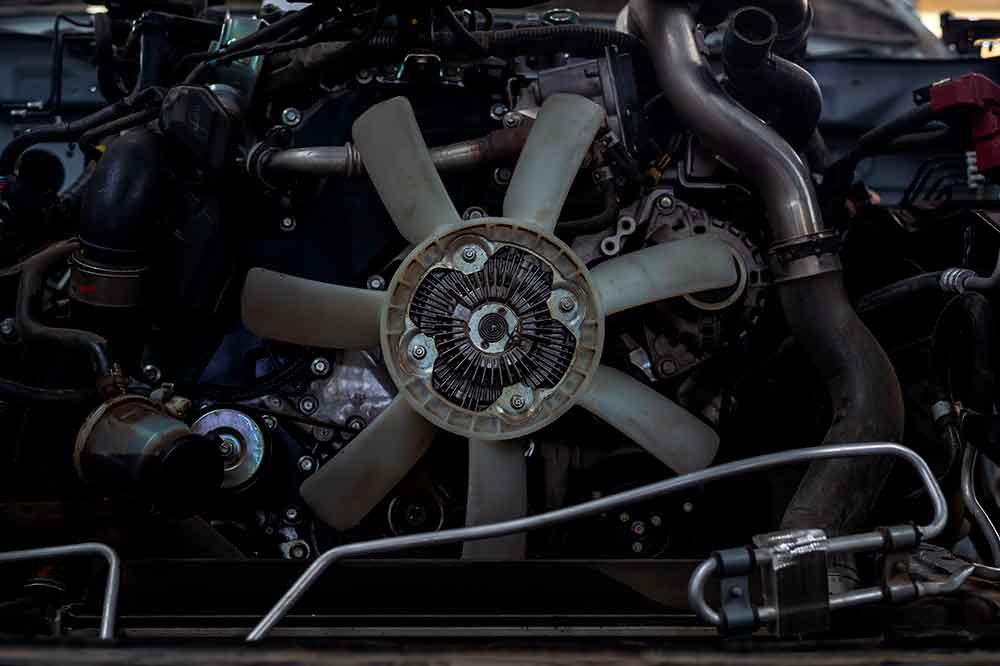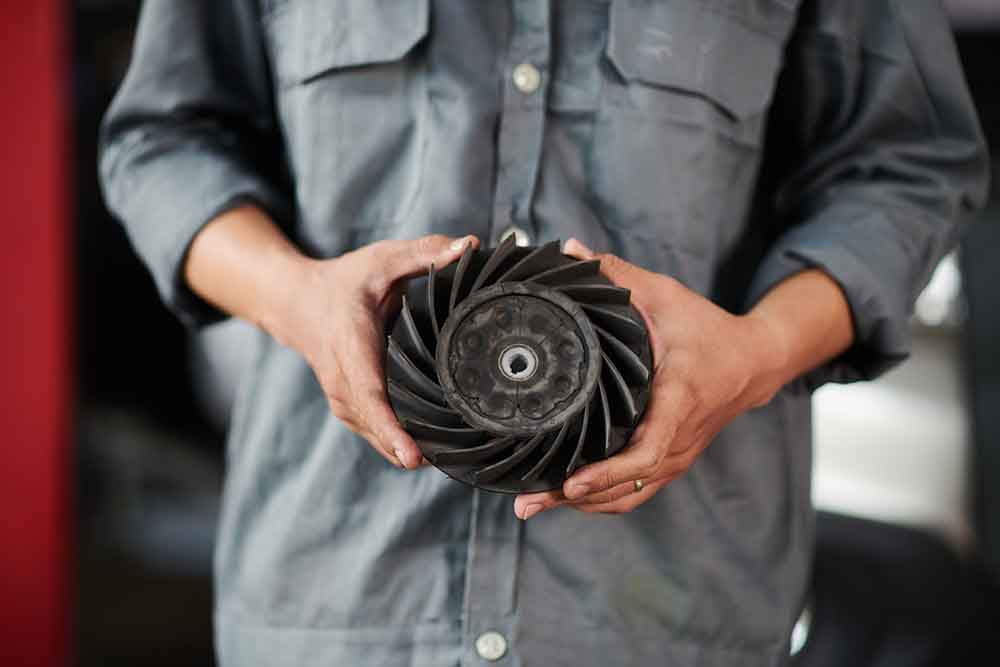The Role of the Fan in the Vehicle Cooling System
The radiator fan is responsible for directing airflow through the radiator fins, which cools the coolant (water or a water–antifreeze mixture). This becomes especially important when the vehicle is in traffic or idling, where natural airflow is insufficient.
The fan motor typically operates on 12V DC (in standard passenger vehicles) and is activated via a relay or the ECU (Electronic Control Unit). Therefore, the proper performance of the fan motor is directly related to the health of both the cooling and electrical systems of the vehicle.
Main Causes of Fan Motor Burnout
1. Radiator Blockage
The most common cause of fan motor burnout is clogging or blockage of the radiator fins. When the radiator becomes blocked by sediment, rust, insects, or debris, heat exchange does not occur efficiently. As a result:
- The coolant temperature rises sharply
- The fan must run continuously and at high speed to compensate
- The increase in thermal and electrical load causes the fan motor to burn out
2. Thermostat Failure
The thermostat controls the flow of coolant between the engine and the radiator. If it remains stuck in a closed position, coolant flow is interrupted and the engine temperature increases rapidly. The fan is then forced to run continuously and eventually burns out.
3. Water Pump Failure
The water pump circulates coolant throughout the system. Damaged impellers, leaks, or a worn pump shaft can reduce or stop coolant circulation. This again causes overheating and continuous stress on the fan.
4. Use of Improper or Worn Coolant
Old or poor-quality coolant gradually loses its heat transfer efficiency and may lead to scale buildup inside the cooling system. Similar to radiator blockage, this raises engine temperature and overloads the fan motor.
5. Electrical System Malfunction
If the fan relay, coolant temperature sensor, or ECU malfunctions, the fan may run continuously or operate incorrectly. Continuous operation beyond the designed duty cycle can overload and burn the fan motor.
Signs of a Burned Fan Motor
- The fan does not operate at all
- The fan runs slowly or makes abnormal noises
- The engine overheats, especially in traffic
- Sudden rise in coolant temperature on the dashboard
- The engine temperature warning light turns on
Preventive Solutions
Before replacing a burned fan motor, the cooling system must be fully inspected to prevent the issue from recurring:
✅ Radiator Cleaning
Wash the radiator fins externally (with appropriate pressure) and perform internal descaling using radiator flush solutions.
✅ Check Thermostat and Water Pump
The thermostat must open at a specific temperature (test using boiling water or an OBD scanner). Inspect the water pump for leakage and proper coolant circulation.
✅ Periodic Coolant Replacement
Coolant should be replaced every 2–3 years depending on type, to prevent rust and deposits.
Electrical System Inspection
Check the coolant temperature sensor, fan relay, fuses, and wiring to ensure correct electrical operation.
Conclusion
Fan motor burnout often results from failures in other components of the cooling system—not necessarily from poor fan quality. In reality, the fan motor becomes a victim of an underlying issue involving coolant circulation or heat transfer. By thoroughly inspecting and maintaining the cooling system, the lifespan of the fan motor can be significantly increased, preventing unnecessary costs.




Leave a Reply